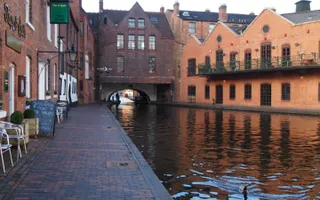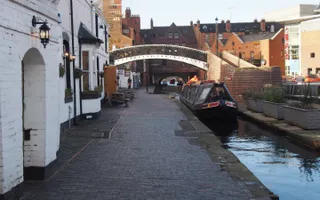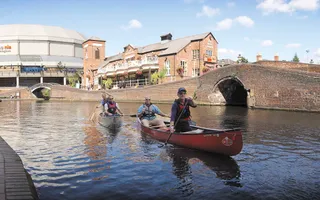The canal is a great base for exploring central Birmingham. Attractions include the bars and restaurants of Brindley Place, the National Sea Life Centre and the Birmingham Repertory Theatre.
It was designed by Thomas Telford to shorten and straighten the course of the Birmingham Canal Old Main Line, taking seven miles off the original length. This was the height of modern canal engineering in its day. Modern boaters can easily imagine how it must have speeded up traffic – with no locks and a straight course, it is one of the few canals where you can get up to the 4mph speed limit.
The history
By the 19th century, the canals around Birmingham and the Black Country had become so busy that congestion was becoming a serious problem. The engineer Thomas Telford was brought in to assist.
Of a much later period than Brindley, he was backed not only by engineering advances that had been made in the interim, but by his own confident style, which resulted in a straighter, bolder New Main Line that reduced the distance between Birmingham and Wolverhampton by a third. The Telford line runs through massive cuttings and bold embankments while also using fewer locks and lies on the 453ft level, 20ft below that of Brindley. A contemporary local historian, suitably impressed, described the new route as "stupendous magnificence".
The loops criss-crossing the New Main Line are the remains of convoluted sections of the Brindley Line that were cut through by Telford. Islands in the middle of the canal once housed toll-offices, all now gone. Near Tividale the Old and the New are linked by the Gower Branch and its three locks, the upper two of which form the only staircase to be found on the BCN. Ryland Aqueduct was rebuilt in 1968 to replace an earlier structure and it is on the nearby railway line that Queen Victoria once reputedly closed the curtains of her carriage so as not to view the scene, which at the time was one of overwhelming industrialisation.
Telford's cast iron Galton Valley Bridge has a span of 150ft (46m) and is preserved as an ancient monument. When built it was the longest single span bridge over what were claimed to be the largest earthworks in the world.









